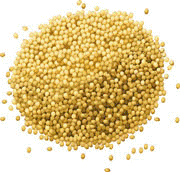International Sorghum and Millet Collaborative Research Support Program (INTSORMIL CRSP)

INTSORMIL Impacts and Bulletins
Date of this Version
1-12-2007
Document Type
Article
Citation
INTSORMIL Report No. 9, January 12, 2007
Abstract
Pearl millet, a crop native to the harsh growing conditions of Sub Saharan Africa, is now finding a new home in the U.S. Although pearl millet has been grown for livestock forage in the U.S. for over 100 years, new uses for pearl millet and genetic improvement of the crop have recently caused pearl millet grain production to blossom.
INTSORMIL, in collaboration with the USDA-ARS and the University of Georgia, by breeding new hybrids and identifying new uses has provided a transfusion for pearl millet production in the U.S. The collaboration has resulted in the production of high quality grain in spite of the stressful growing conditions commonly faced by southern U.S. producers. Interest in pearl millet is increasing because it (1) has low production costs, (2) grows well in poor dryland and sandy soils, (3) uses less fertilizer, (4) is resistant to nematodes and (5) has a short growing season.
There is an increasing market demand for pearl millet in the U.S. Diverse local market opportunities exist in the recreational wildlife, poultry and pet food industries. Current grain production is unable to meet the demands of the massive poultry industry. It is likely that ethanol production will be another high-volume market for the grain in the future. Thus, pearl millet offers new opportunities to growers and agribusiness in the U.S. and potential benefits to the economy and environment.
Through the INTSORMIL pearl millet research network within Africa, cultivars and experimental germplasm have been acquired for evaluation in the U.S. These accessions are proving to be valuable sources of new traits for the U.S. These traits will also provide security for future production as U.S. hybrids are highly susceptible to many exotic pests and diseases. “Considering the increasing demands on water resources, pearl millet is an ideal alternative to thirsty soybeans and corn in southern production settings,” according to Jeff Wilson. Wilson is one of a team of USDAARS and University of Georgia scientists at UGA Tifton working on the improvement of pearl millet. Because pearl millet is a native of Sub Saharan Africa, it can produce a crop without irrigation and even in a dry year, pearl millet can yield 60 bushels of high protein grain per acre. With its short growing duration pearl millet fits in many double-cropping and rotation systems.

